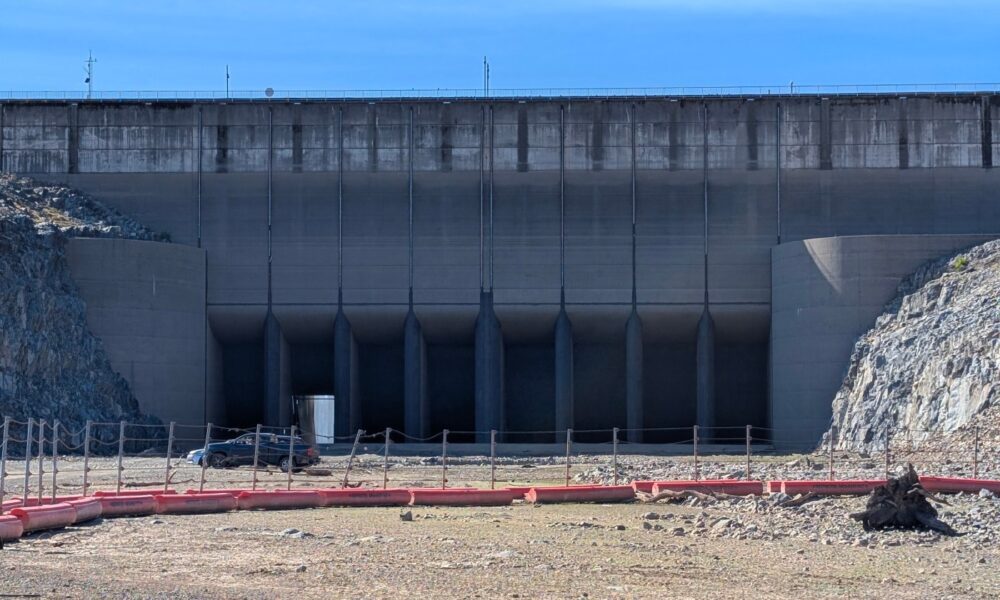UPDATE: Lake Oroville’s water level has plunged to 778.31 feet as of 2 p.m. Tuesday, marking a significant seasonal decline. This drop is part of the annual cycle, where the lake’s levels recede, exposing structures like the Oroville Dam spillway and impacting local recreational activities.
As the summer heat wanes, the water level has fallen below the previous year’s measurement of 824.09 feet on the same date. In stark comparison, on October 21, 2024, it was recorded at 767.54 feet. These fluctuations underscore the ongoing challenges in managing water resources in California.
The California Department of Water Resources (DWR) has confirmed that current flow rates through the city of Oroville are at 650 cubic feet per second (cfs), while releases from the Thermalito Afterbay outlet are significantly higher at 1,800 cfs. This management strategy is crucial for meeting the goals of the State Water Project, especially as the state continues to navigate the complexities of water supply and demand.
This year’s water level is currently at 55 percent of Lake Oroville’s total capacity and 102 percent of the historical average, indicating a complex interplay of factors influencing the lake’s health. The latest DWR update emphasizes the importance of these measurements in ensuring sustainable water management for both agricultural and urban needs.
Due to the low water levels, certain recreational facilities are affected. A launch ramp near the Oroville Dam spillway has been closed, impacting local boaters and outdoor enthusiasts. The situation has prompted maintenance work along sections of the Brad Freeman Trail, further restricting access to some areas.
Authorities urge residents and visitors to remain informed about the evolving conditions at Lake Oroville. With water levels continuing to be monitored closely, the community is advised to stay tuned for further updates from the DWR, especially as the dry season progresses.
As this situation develops, the impact on local ecosystems and recreational activities will be closely watched. Residents are reminded to conserve water and consider the implications of these changes on the broader California water crisis.
Expect further updates as monitoring continues and new data emerges. For now, the decline in Lake Oroville’s water level serves as a stark reminder of California’s ongoing water management challenges.







